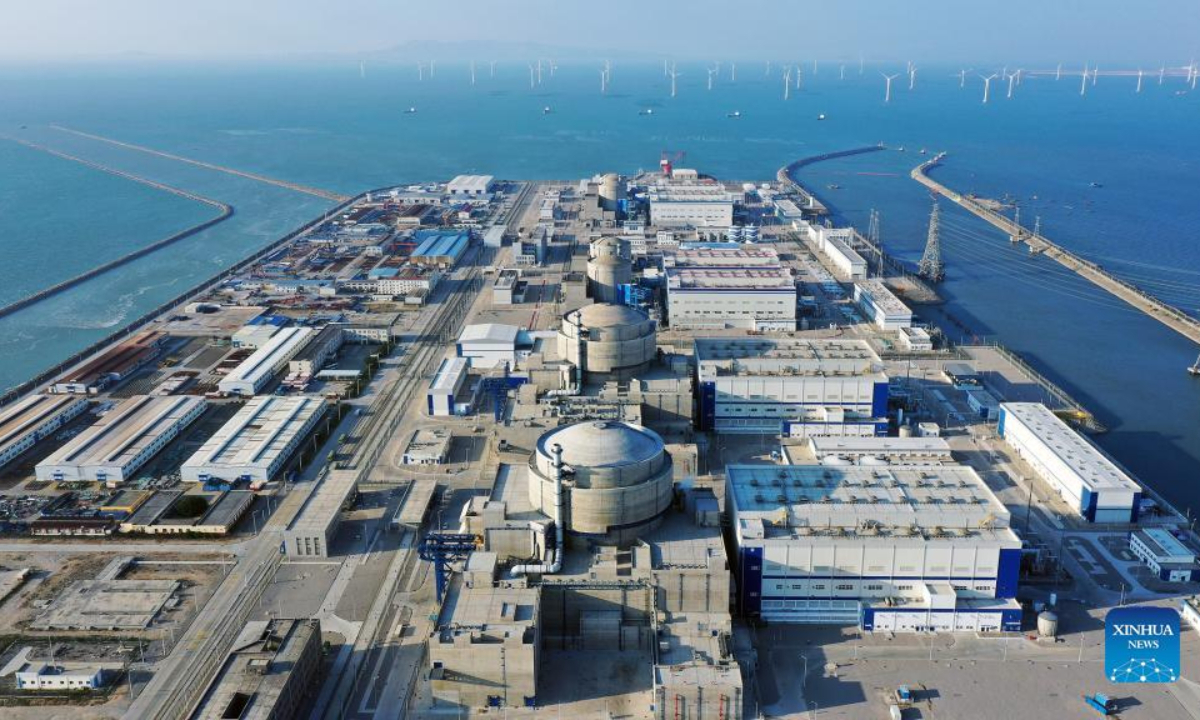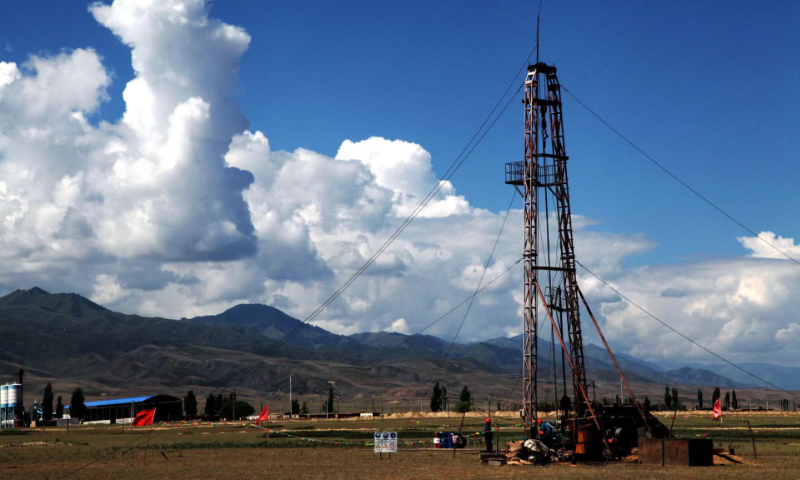
Aerial photo taken on Dec 1, 2021 shows nuclear power units under the China National Nuclear Corporation (CNNC) in Fuqing, southeast China's Fujian Province. Photo:Xinhua
China has added one-third of its total known uranium resources, accumulated in the past 68 years, during extensive survey and exploration work during the past 10 years, while 70 percent of the newly discovered resources are fine, extractable resources, according to an industry report published on Friday by the China Nuclear Geology, a subsidiary of Chinese nuclear giant China National Nuclear Corporation (CNNC).
The success in surveying and exploration, the frontend of nuclear fuel cycle, has guaranteed the stable and highly effective supply of natural uranium, and has ensured the nation's nuclear industry to firmly hold the rice bowl in its own hands, as China toils to enhance its mineral supply security with a national campaign, industry experts said.
According to the latest assessment of China's uranium resource potential, the country has over 2.8 million tons of natural uranium resources, indicating the country's tremendous potential in the capacity of domestic supply to ensure security over the fuel as the world faces complex situation.
One super-size sandstone mine and five large-size mines were identified during the period and the country's dynamic surveying capacity has been kept at 1 million meters a year, according to the report.
The increase in the supply of the nuclear fuel has greatly improved China's national and energy security, and further boosted China's status as a "uranium-rich country," experts said.
The newly found reserve serves as a "ballast stone" of domestic supply and "stabilizer" of international prices as risks continue to rise amid the US' wanton crackdown and containment of China, noted experts.
"Through capacity building and tapping the latest technologies … China's uranium supplies can ensure its nuclear fuel security," Li Ziying, a top expert with CNNC, told the Global Times.
As the world shifts toward cleaner energy resources and countries move in the direction to strive for carbon neutrality, the competition over uranium, used to power nuclear plants and for national defense weapons, is intensifying with major countries competing over control of supplies.
Uranium demand is set to climb from 162 million pounds in 2021, to 206 million pounds by 2030 and 292 million pounds by 2040, per forecast of the World Nuclear Association.
China is expected to run the world's largest nuclear power plant fleet before 2030 and nuclear power is set to account for 10 percent of all electricity generation by 2035, according to a separate industry report in April.

A survey and exploration facility of uranium of China National Nuclear Corporation (CNNC) File photo: Courtesy of CNNC
China's nuclear fuel came from a mix of its nuclear fuel supply by domestic extraction, equity investment and mining rights in overseas mines and purchase on the open market.
In January, China launched Asia's only natural uranium bonded warehouse at Alashankou Port in Northwest China's Xinjiang region, after two years' preparation. Phase two of the warehouse, which has the function of storing, digitalization and trading, is set to be put into operation in 2024.
The uranium report is published as China is in the midst of a new round campaign to seek strategic mineral resources from within the country.
From 2011 to 2020, China discovered 17 major oilfields with reserves of over 100 million tons and 21 major gas field with reserves of over 100 billion cubic meters, according to Xinhua.


